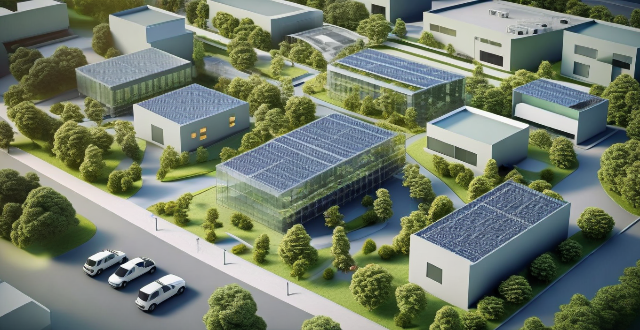Innovative technologies are being developed to mitigate global warming and reduce greenhouse gas emissions. These include renewable energy sources, carbon capture and storage, nuclear fusion, electric vehicles, smart grid technology, afforestation and reforestation, energy efficiency improvements, biofuels and bioenergy, green building design, and climate engineering. Each of these technologies offers unique benefits and challenges in addressing the pressing issue of global warming.

Innovative Technologies for Mitigating Global Warming
Global warming is a pressing issue that requires immediate action. Various innovative technologies are being developed to mitigate its effects and reduce greenhouse gas emissions. Here are some of the most promising technologies:
1. Renewable Energy Sources
Renewable energy sources such as solar, wind, hydro, and geothermal power are becoming increasingly popular as alternatives to fossil fuels. These technologies produce clean energy without emitting harmful pollutants into the atmosphere.
- Solar Power: Solar panels convert sunlight into electricity using photovoltaic cells. They can be installed on rooftops, in large solar farms, or even on small devices like calculators.
- Wind Power: Wind turbines capture the kinetic energy of wind and convert it into electricity. They can be placed on land or offshore, depending on the availability of wind resources.
- Hydropower: Hydropower plants use the force of moving water to generate electricity. They can be built on rivers, waterfalls, or other bodies of water.
- Geothermal Power: Geothermal power plants use the heat from underground reservoirs of hot water and steam to generate electricity. They are particularly effective in areas with high geothermal activity.
2. Carbon Capture and Storage (CCS)
Carbon capture and storage (CCS) technology involves capturing carbon dioxide emissions from power plants and industrial processes, then storing them underground in geological formations. This helps reduce the amount of CO2 released into the atmosphere, which contributes to global warming.
3. Nuclear Fusion
Nuclear fusion is a process that mimics the way stars generate energy by combining atomic nuclei to release vast amounts of energy. Unlike nuclear fission, which is currently used in nuclear power plants, nuclear fusion produces no long-lived radioactive waste and has the potential to provide a virtually limitless supply of clean energy.
4. Electric Vehicles (EVs)
Electric vehicles (EVs) run on electricity instead of gasoline or diesel, reducing greenhouse gas emissions associated with transportation. As battery technology improves and charging infrastructure expands, EVs are becoming more affordable and practical for everyday use.
5. Smart Grid Technology
Smart grid technology uses advanced communication systems to manage electricity demand and supply more efficiently. This allows for better integration of renewable energy sources and reduces the need for fossil fuel-powered peaker plants that are typically used during times of high demand.
6. Afforestation and Reforestation
Planting trees and restoring forests can help absorb carbon dioxide from the atmosphere through photosynthesis. Afforestation and reforestation also provide habitats for wildlife, prevent soil erosion, and contribute to overall ecosystem health.
7. Energy Efficiency Improvements
Improving energy efficiency in buildings, appliances, and industrial processes can significantly reduce energy consumption and greenhouse gas emissions. Examples include using LED lighting, installing high-efficiency windows and insulation, and adopting energy-saving practices in manufacturing processes.
8. Biofuels and Bioenergy
Biofuels made from plant materials or organic waste can replace fossil fuels in transportation and heating applications. Additionally, bioenergy systems like anaerobic digestion can generate electricity while treating wastewater or organic waste streams.
9. Green Building Design
Green building design incorporates sustainable practices such as solar panel installation, rainwater harvesting systems, and natural ventilation to minimize environmental impact and reduce energy consumption. This approach not only benefits the environment but also saves money on utility bills over time.
10. Climate Engineering
Climate engineering involves large-scale interventions to manipulate the Earth's climate system directly. While still largely theoretical and controversial, proposed methods include solar radiation management (such as releasing reflective particles into the atmosphere) and carbon dioxide removal (such as ocean fertilization or direct air capture). However, these techniques carry significant risks and uncertainties, making them a last resort option for addressing global warming.